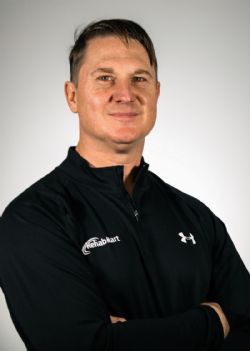When it comes to protecting our loved ones living with special needs against head injuries, selecting the most suitable head protection to meet their specific requirements is paramount. Children with multiple disabilities have the highest risk of injury to the head, while traumatic brain injury (TBI) remains the leading cause of death and disability worldwide.
What should you consider when choosing the type of head protection to use?
What are medical helmets for?
Medical helmets are required for numerous medical conditions, especially those involving weak muscles, muscle wasting, spasms, seizures, and poor balance. These specialized helmets are designed to protect wearers from head injuries if they were to fall. Medical helmets are also frequently used for newborns, preemies, and babies with misshapen heads, craniosynostosis, and other conditions. Helmet therapy and cranial remolding help to correct these conditions, gently reshaping the head as the baby grows.
What is a seizure helmet?
A seizure helmet is specially configured to reduce the risk of head injuries for children and adults living with epilepsy. They provide tailored coverage, taking into account the user's unique fall patterns, seizure triggers, and support needs. Choosing the right seizure helmet can help provide protection against injury to the head. Seizure helmets are recommended for all types of generalized and focal onset seizures, particularly for individuals who experience frequent episodes.
What does an autism helmet do?
An autism helmet optimizes safety for children and adults across the autism spectrum (ASD), shielding them from incurring harm to the head and brain. Associated with a higher risk of self-injurious behavior, some with ASD may exhibit headbanging, headbutting, and repetitive face and head slapping. Wearing an autism helmet helps reduce head, brain, and face injuries that often result from those behaviors. It also provides support for children and adults with dual and co-morbid diagnoses such as epilepsy and OCD to avoid injury during a seizure. Additionally, an autism helmet can be used as a grounding and calming guide when the child or adult is overstimulated or overwhelmed and in a crisis state.
What is a concussion headband?
A concussion headband is worn around the head to help prevent concussions and other cranial injuries. Reducing the usual impact forces incurred with hits to the head, collisions with the ground, and objects striking the head, these specialized headbands lower the risk of developing a head or brain injury. While a concussion headband can’t prevent all concussions, it can reduce your chances of sustaining one. Less disturbance of the brain and skull may make a huge difference in the effects you experience and how well you recover.

Features of special needs helmets to consider before buying
Full coverage, partial coverage, or headband
- Full coverage: Ideal for children and adults who are prone to falls in multiple directions, full coverage headgear typically covers the crown, ears, forehead, and jawline, with some designs that envelop the neck as well. This extensive protection is frequently used to protect the wearer from the self-abusive behaviors like headbanging and thrashing that sometimes accompany sensory processing disorder (SPD), autism spectrum disorder (ASD), and a host of other conditions. Well-suited for seizures caused by epilepsy, full coverage head protection is also a good fit for users with a tendency toward sudden, unpredictable movements. Specially designed face shields add protection for the face, especially helpful for wearers who customarily fall forward.
- Partial coverage: Perfect for children and adults who need moderate head protection, a partial coverage safety helmet focuses its defense against injuries to the forehead and top half of the head. Similar in design to a traditional cycling helmet, partial coverage headgear is ideal for users with less physically aggressive behaviors than those who require full coverage. Often employed as an additional safety measure against concussions and TBIs rather than a means of primary defense, partial coverage head protection is well suited for users who have a tendency toward top-of-head and forehead injuries.
- Headband: Lightweight and easy to adjust, protective headbands are specially engineered to reduce the risk of head injuries by absorbing and dispersing impact forces. Also known as a concussion headband, this specialized protective headgear is often utilized in sports like soccer and basketball where players do not typically use helmets. Suitable for a variety of activities, headbands can be added to a protective helmet for optimal safety, or used alone by children and adults who only require some light head protection.
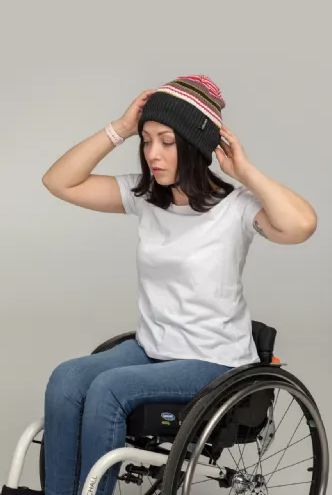
We recommend: Ribcap Iggy: Soft Helmet
Hard or soft shell
- Hard shell: Offering the highest durability for the toughest wear, a hard shell safety helmet comes with the lowest risk of cracking, breaking, or deforming over time. Ideal for children and adults who experience frequent falls, seizures, and a strong tendency toward other impacts to the head. Hard shell headgear provides long-lasting head protection for users who need long-term support. However, hard shell helmets may be too heavy and bulky for children and adults who have low neck strength, along with the possibility of being too hot to wear in warmer environments. They’re also the most conspicuous type of protective headgear, possibly causing patient non-compliance.
- Soft shell: Comprising a variety of different materials such as foam, leather, vinyl, and more, a soft shell safety helmet is specially configured to absorb shock, redistributing the impact on contact to protect the wearer from head injuries. Innovative design elements make soft shell head protection softer, lighter, better ventilated, and more comfortable to wear for daily protection. Some designs harden immediately upon contact, providing optimal defense against TBIs and other common injuries of the head, face, and brain.
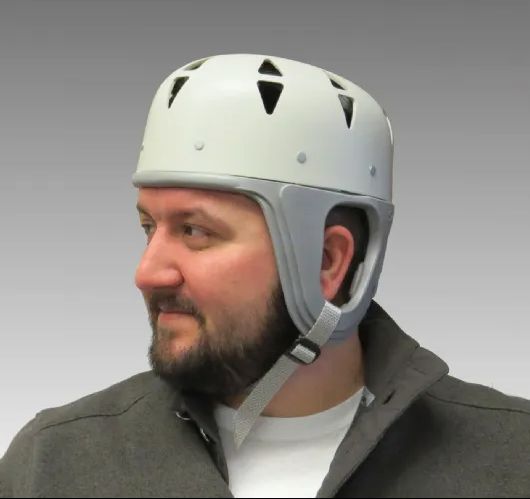
We recommend: Danmar Hard Shell Comfy Cap
Material
- EVA foam: Producing a material that is rubber-like in softness and flexibility, EVA foam is an elastomeric polymer that’s extremely tough and crack-resistant. Also known as expanded or foam rubber, EVA foam provides unrivaled impact absorption and dispersion. It helps reduce the risk of serious head injuries, yet it is super breathable and lightweight. Conveniently water-resistant for outdoor wear and easy to clean, headgear made with EVA foam will not cause skin irritation when worn against the scalp.
- Leather: Highly durable and hardwearing, leather is often used in a safety helmet’s outer shell to ensure long-lasting protection. Reducing the risk of damage from hard or repetitive impacts, leather protective headgear can be used in any kind of weather and is easy to clean and maintain. Often specially formulated and configured to optimize impact dispersion, the leather itself acts as a barrier against impacts, protecting the wearer from injuries to the head.
- Cotton: Cooler and lighter in weight than other headgear materials, cotton head protectors promote airflow and moisture wicking for more comfortable wear. Ideal for users prone to overheating and excessive sweating, protective headgear constructed with cotton components helps safeguard wearers from brain and head injuries. Although a cotton safety helmet is softer and cooler, it may fray and split over time if it is subjected to harsh daily wear.
- Plastic: Typically using acrylonitrile butadiene styrene (ABS) or polycarbonate, polypropylene, and polyethylene formulations, plastic protective headgear is specially designed to withstand rough and tough wear. It is usually incorporated into the outer shell of a safety helmet, adding another level of protection for cotton or foam inner shells. Even though plastic safety helmets provide optimal durability against strong impacts to the head, they are often designed to feel soft to the touch, making them more comfortable for long-term wear.
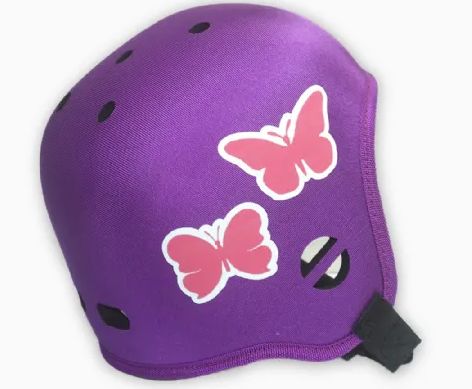
We recommend: Opti Cool EVA Helmet
Chin straps
- Quick Release Chin Straps: these adjustable chin straps offer a quick release by simply squeezing the buckle, making the protective headgear fast and easy to remove by the wearer.
- Helmet Custom Strapping System: Offering added safety against the wearer’s attempts to remove the helmet at inappropriate times, the adjustable helmet custom strapping system puts the parent or caregiver in control. Straps are attached to both sides of the safety helmet, crossing comfortably beneath the chin and secured to the back of the helmet with quick-release buckles.
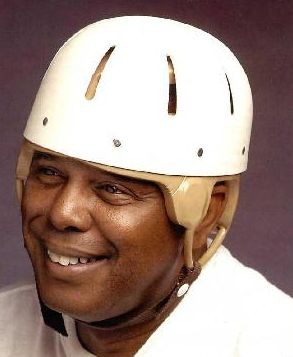
We recommend: Danmar Hard Shell Helmet in Cream
Style
- Bump caps: Cleverly disguised to look just like baseball caps, bucket hats, beanies, and more, bump caps feature discreet inner padding that absorbs and redistributes cranial impacts. Soft and comfortable for all-day wearability, the stylish bump caps highlight lightweight and breathable head protection that no one knows you’re wearing!
- Headbands: Also known as concussion headbands or concussion head guards, headbands designed for head protection provide the most lightweight and inconspicuous coverage. As a relative newcomer to concussion prevention, these headbands are often worn by athletes and feature cutting-edge technology to absorb and disperse impact forces to the head.
- Traditional helmets: From minimal, partial head protection to complete and total protective headgear, traditional helmets come in a wide variety of styles to suit the special needs of their varied users. Hard shell helmets with full coverage are generally best for children and adults who require the most protection from penetration injuries, while partial-coverage soft shell helmets are usually utilized for lesser force impacts, such as headbanging.
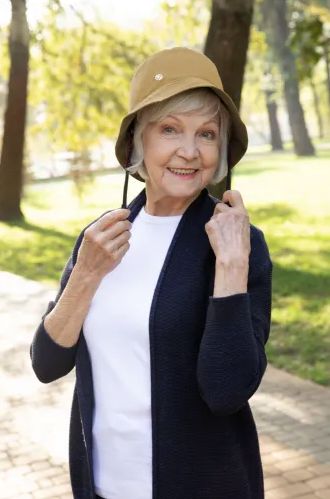
We recommend: Ribcap Products
Final Thoughts
When you consider the doubled mortality rates associated with head injuries, the importance of wearing special needs head protection for prevention cannot be overstated. Children and adults with epilepsy, ASD, cerebral palsy, SPD, and many other medical conditions that raise the risk of falls, seizures, and uncontrolled movement can find a safer way to live with these conditions by using the right protective headgear.
We hope this special needs head protection buying guide holds the information you’ve been searching for, and we appreciate you taking the time to read it! Be sure to check out additional educational articles at Caregiver University, and sign up for our newsletter for more articles like this.
Author:
Hulet Smith, OT
Co-founder/CEO of Rehabmart, Pediatric Occupational Therapist, husband, and father. Passionate about connecting special needs kids with superb nutrition, sensory integration, and complementary health strategies. Excited about Rehabmart's mission to become the premier online educational platform which empowers caregivers by spotlighting innovative devices and interventions to achieve optimal patient response and recovery.
Meet all of our experts here!
 Written by Hulet Smith, OT
Written by Hulet Smith, OT






